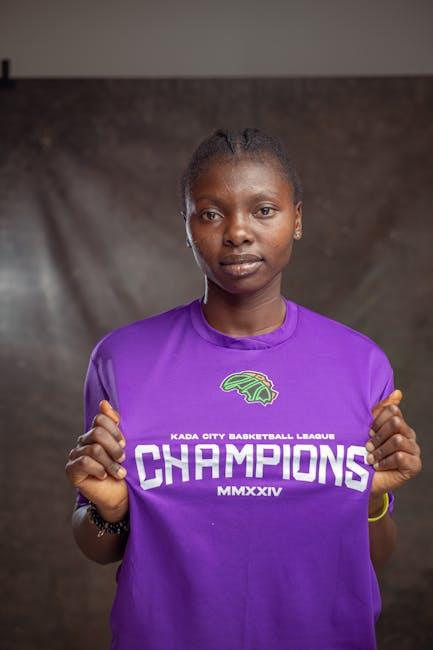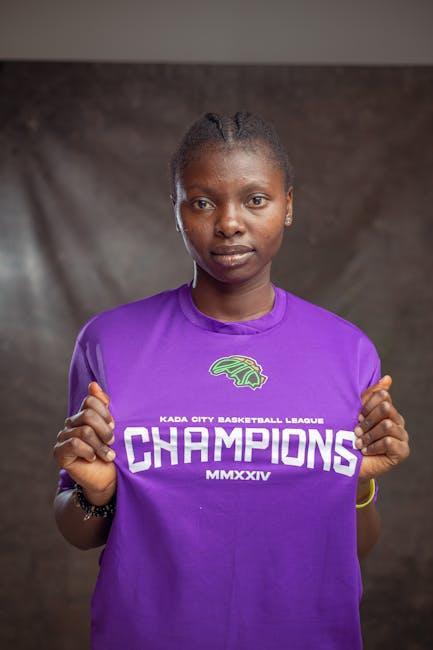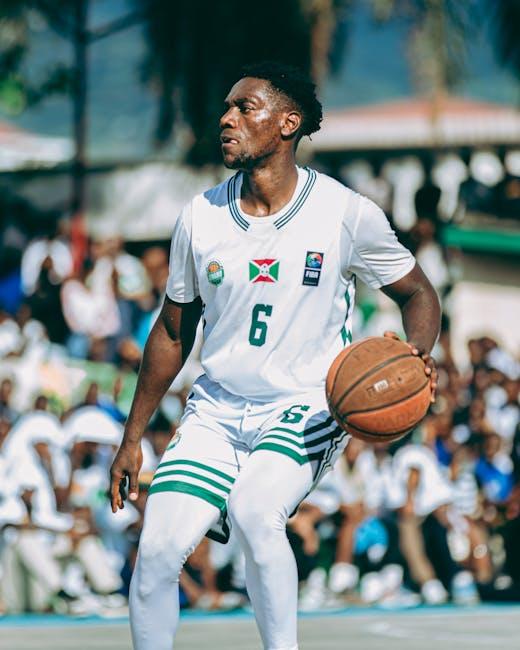Basketball is a game of passion, precision, and power—a mosaic of skill and strategy played out on courts around the world. While the roar of the crowd often echoes with the feats of male athletes, the dynamic world of women’s basketball leagues deserves equal spotlight. From grassroots competitions to professional arenas, these leagues weave a compelling narrative of talent, determination, and growth. This overview delves into the diverse landscape of women’s basketball leagues, exploring their histories, structures, and the vibrant communities that sustain them. Whether you’re a seasoned fan or a curious newcomer, join us as we step onto the court to celebrate the evolving game of women’s basketball.
Table of Contents
- Introduction to Women’s Basketball Leagues Around the World
- Key Players Shaping the Competitive Landscape
- Comparative Analysis of League Structures and Formats
- Growth Trends and Emerging Markets in Women’s Basketball
- Challenges Facing Women’s Basketball Leagues Today
- Strategic Recommendations for Enhancing Visibility and Support
- Q&A
- In Retrospect

Introduction to Women’s Basketball Leagues Around the World
Across continents, women’s basketball has blossomed into a dynamic and inspiring spectacle, weaving together diverse cultures and styles of play. From the fierce physicality of the WNBA in the United States to the strategic finesse seen in Europe’s premier leagues, the sport has carved out an essential place in the global sporting landscape. Emerging leagues in Asia and Australia continue to elevate talent and fan engagement, further illustrating basketball’s universal appeal. These leagues not only showcase athletic excellence but also contribute to gender equality and the empowerment of women in sports.
Key elements that define these leagues include player development programs, competitive formats, and community outreach initiatives aimed at growing the game at the grassroots level. Each league offers unique opportunities for athletes to shine on national and international stages, fostering a spirit of competition and unity. Below is a snapshot of some prominent women’s basketball leagues around the world:
- WNBA (USA) – Premier professional league with global broadcast reach and top-tier talent.
- EuroLeague Women (Europe) – Elite club competition featuring the continent’s best teams.
- WNBL (Australia) – Known for developing young stars and a strong connection with local communities.
- CBA Women’s League (China) – Rapidly growing league emphasizing speed and agility.
| League | Region | Established | Notable Feature |
|---|---|---|---|
| WNBA | North America | 1997 | Highly competitive with international stars |
| EuroLeague Women | Europe | 1958 | Club-based continental championship |
| WNBL | Australia | 1981 | Focus on youth and community |
| CBA Women’s League | Asia | 2002 | Explosive pace of play |

Key Players Shaping the Competitive Landscape
Across global women’s basketball leagues, certain standout athletes have become synonymous with excellence and influence, driving the sport’s evolution and fan engagement. Players like Breanna Stewart, known for her versatility and leadership, continuously elevate the level of play, while rising stars such as Satou Sabally captivate audiences with their dynamic performances. These athletes not only bring star power but also inspire new generations through community involvement and advocacy off the court.
Behind the scenes, innovative coaches and executives also shape league dynamics by fostering talent and crafting competitive team cultures. Clubs that strategically blend youth and experience often dominate their respective leagues, creating compelling rivalries and unforgettable seasons. The table below highlights a selection of prominent players and their unique impact within leading leagues:
| Player | League | Signature Strength | Impact |
|---|---|---|---|
| Breanna Stewart | WNBA | All-around dominance | League MVP & championship leader |
| Satou Sabally | WNBA | Scoring versatility | Role model & rising star |
| Emma Meesseman | EuroLeague Women | Clutch performer | European championships catalyst |
| Liz Cambage | WNBL | Post presence | Revolutionizing center play |

Comparative Analysis of League Structures and Formats
Across the globe, women’s basketball leagues exhibit a fascinating diversity in their operational frameworks. From the double round-robin formats that emphasize consistency and endurance to the knockout stages adopted in some regions that inject unpredictability and excitement, each league crafts its own unique journey toward crowning a champion. Leagues like the WNBA focus heavily on a balanced regular season followed by an intense playoff series, while European leagues often integrate multi-level tournaments that blend domestic and continental competitions, showcasing a blend of tradition and innovation in scheduling.
Several key factors shape these structures, including the number of participating teams, league duration, and commercial objectives. Key distinctions include:
- Season length: Varies considerably, from compact schedules under three months to those spanning over eight months.
- Playoff models: Some leagues feature single-elimination games; others use best-of-five or best-of-seven series.
- Promotion and relegation: Present in some international leagues, absent in North American systems.
| League | Teams | Season Format | Playoff Type |
|---|---|---|---|
| WNBA | 12 | 36-game double round-robin | Single-elimination & best-of-five series |
| EuroLeague Women | 16 | Group stage + knockout rounds | Best-of-three series |
| WNBL (Australia) | 8 | 20-game regular season | Best-of-three semi-finals and finals |

Growth Trends and Emerging Markets in Women’s Basketball
In recent years, women’s basketball has witnessed a remarkable surge in popularity, driven by expanding audience engagement and increased investment worldwide. Notably, several emerging markets across Asia, Africa, and South America are reshaping the global landscape of the sport. Nations like China and Nigeria are cultivating formidable domestic leagues, blending local talent development with international collaborations. Such growth fosters new opportunities for players, sponsors, and broadcasters alike, creating a dynamic ecosystem that propels the sport beyond traditional strongholds in North America and Europe.
This expansion is supported by key trends shaping the future of women’s basketball:
- Youth development programs in emerging countries unlocking raw potential and enhancing competitive balance
- Technological integration such as live streaming and social media, fueling global fan connectivity
- Corporate sponsorship increasingly aligned with promoting gender equality, boosting league visibility
- Cross-border player exchanges enriching leagues with diverse playing styles and cultural influences
| Region | Growth Rate (5 yrs) | Key Emerging Market | Notable Feature |
|---|---|---|---|
| Asia | 18% | China | Strong youth academies |
| Africa | 22% | Nigeria | Increasing domestic league professionalism |
| South America | 15% | Brazil | Growing fan engagement online |
| Europe | 10% | Spain | Established infrastructure with steady innovation |

Challenges Facing Women’s Basketball Leagues Today
Despite the growing popularity of women’s basketball, numerous obstacles continue to hinder its development and visibility. One major issue is financial disparity, where women’s leagues often receive significantly less funding compared to their male counterparts, affecting everything from player salaries to marketing budgets. This financial gap leads to challenges in securing top-tier talent and retaining experienced coaching staff, ultimately impacting the quality of play and fan engagement. Additionally, limited media coverage restricts public exposure, which in turn reduces sponsorship deals and merchandising opportunities—creating a cyclical challenge that women’s basketball leagues must continuously navigate.
Another critical challenge is overcoming societal perceptions and gender biases, which still influence how women’s sports are valued and supported worldwide. Fans and sponsors alike are often less familiar with female athletes, and there remains a need to build trust and enthusiasm around the leagues. Growing grassroots programs and enhancing community outreach are key strategies, but these require consistent commitment and resources. Below is a quick overview of challenges and potential focus areas:
| Challenge | Impact | Focus Area |
|---|---|---|
| Funding Inequality | Lower salaries and fewer resources | Increase investment and sponsorships |
| Media Exposure | Limited visibility and fanbase growth | Expand digital and broadcast coverage |
| Gender Bias | Reduced audience engagement | Promote awareness and inclusivity |
| Talent Retention | Player migration to other leagues | Develop competitive contracts and facilities |

Strategic Recommendations for Enhancing Visibility and Support
To elevate the prominence of women’s basketball leagues, embracing innovative marketing strategies is paramount. Harnessing the power of social media platforms with targeted campaigns can engage diverse audiences and build a loyal fan base. Collaborations with influencers, athletes, and brands that resonate with young and dynamic demographics will amplify reach effectively. Additionally, leveraging live streaming technologies and interactive fan experiences enhances accessibility and creates an immersive connection between players and supporters.
Investing in community outreach programs and youth development initiatives fosters grassroots enthusiasm and long-term growth. Creating scholarships, clinics, and mentoring opportunities will empower aspiring athletes and cultivate local pride. Below is a concise overview of key strategic focus areas:
- Digital Engagement: Active use of TikTok, Instagram Reels, and YouTube Shorts.
- Partnerships: Brand alliances focused on women’s empowerment and sports innovation.
- Fan Experience: Virtual reality games, interactive polls, and in-arena technology.
- Grassroots Programs: Community clinics, school partnerships, and mentorship.
| Area | Strategy | Expected Outcome |
|---|---|---|
| Social Media | Engage influencers for live events | Increase followers by 35% |
| Community Outreach | Youth basketball camps | Boost local registrations by 20% |
| Fan Interaction | Virtual fan voting on MVP | Higher matchday engagement |
Q&A
Q&A:
Q1: What are the most prominent women’s basketball leagues globally?
A1: The landscape of women’s basketball is vibrant and diverse, with several key leagues standing out. The WNBA (Women’s National Basketball Association) in the United States is arguably the most recognized, showcasing top-tier talent and drawing substantial international attention. In Europe, leagues such as Russia’s Premier League, Turkey’s Super League, and the EuroLeague Women tournament highlight elite club competition. Australia’s Women’s National Basketball League (WNBL) is notable in the Southern Hemisphere, nurturing local and international stars alike.
Q2: How does the WNBA impact women’s basketball worldwide?
A2: The WNBA serves as a global beacon for women’s basketball, offering a professional platform that combines competitive play with extensive media exposure. It has helped elevate the sport’s profile, inspiring young athletes worldwide and encouraging the development of local leagues. Its influence also extends to better salaries, improved training facilities, and increased gender equity in sports.
Q3: Are there differences in playing style or rules among various leagues?
A3: While the core rules of basketball remain consistent, subtle variations exist between leagues, influenced by FIBA regulations versus NBA standards. For instance, court dimensions, game duration, and the three-point line distance can differ slightly. Playing style can also reflect regional basketball philosophies—European leagues often emphasize tactical, team-oriented basketball, whereas North American leagues like the WNBA feature a fast-paced, athletic approach.
Q4: What challenges do women’s basketball leagues face today?
A4: Despite progress, women’s basketball leagues grapple with challenges such as limited media coverage, smaller budgets compared to men’s leagues, and disparities in pay and sponsorships. Building larger fan bases and securing long-term financial stability remain ongoing pursuits. Efforts to promote inclusivity, enhance visibility, and create pathways for youth development are critical to the leagues’ continued growth.
Q5: How can fans support women’s basketball leagues?
A5: Fans can champion women’s basketball by attending games, subscribing to broadcasts, engaging with league and player content on social media, and advocating for equitable coverage in sports media. Supporting merchandise, following domestic and international competitions, and encouraging youth participation also contribute to the sport’s vibrancy and sustainability.
Q6: What does the future hold for women’s basketball leagues?
A6: The future of women’s basketball leagues looks promising, fueled by rising talent, increasing global interest, and expanding digital platforms that broaden access. Innovations in fan engagement, investment in grassroots programs, and shifts toward better commercial opportunities point toward a more inclusive and dynamic era for women’s basketball worldwide.
In Retrospect
As the final buzzer sounds on this exploration of women’s basketball leagues around the globe, it’s clear that the game is more than just a sport—it’s a vibrant tapestry of talent, passion, and perseverance. From grassroots courts to professional arenas, these leagues continue to evolve, showcasing the remarkable skill and dedication of women athletes everywhere. Whether you’re a longtime fan or new to the world of women’s basketball, the story is still unfolding, promising exciting chapters ahead. So, keep your eyes on the court, because the future of women’s basketball is not just bright—it’s unstoppable.


